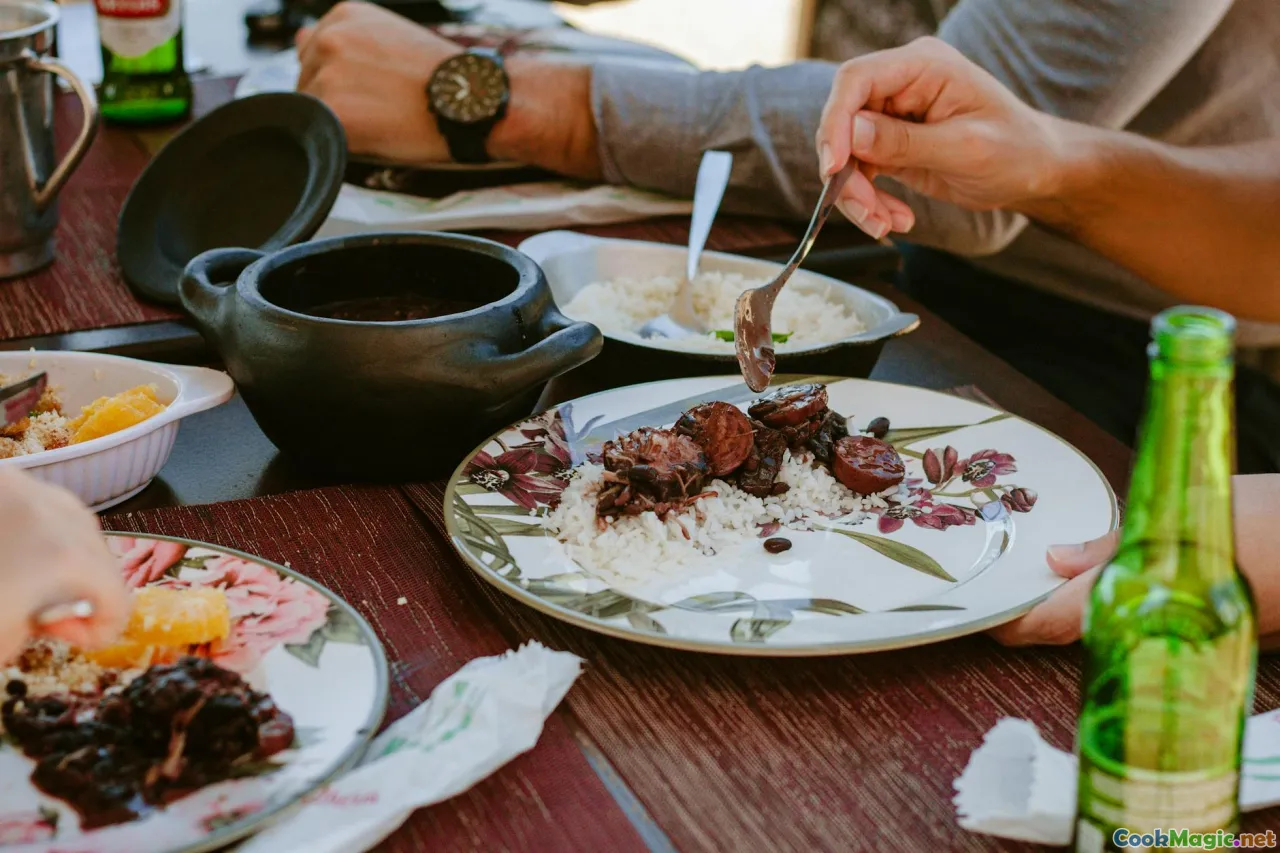How to Master Brazilian Feijoada for a Crowd
7 min read Discover the secrets to preparing authentic Brazilian feijoada for large gatherings, blending rich flavors, cultural history, and vibrant traditions. April 24, 2025 06:55
How to Master Brazilian Feijoada for a Crowd
Imagine a bubbling cauldron of black beans simmering with smoky meats, releasing an irresistible aroma that beckons friends and family to gather around. This is the essence of feijoada, Brazil’s iconic national dish—a hearty, soul-warming stew that embodies community, history, and vibrant flavors. Mastering feijoada for a crowd isn’t just about cooking; it’s about creating a culinary experience that celebrates Brazilian culture and brings people together through food.
The Cultural and Historical Significance of Feijoada
Feijoada’s roots stretch deep into Brazil’s history, with influences from indigenous tribes, Portuguese colonizers, and African slaves. Its origins are often traced back to rural Rio de Janeiro and the southeastern regions, where humble ingredients transformed into a luxurious feast.
Traditionally, feijoada was a dish of the enslaved and working-class communities—using scraps of pork, beans, and local herbs to create sustenance and comfort. Over centuries, it evolved into a symbol of communal sharing, served during festivals, family gatherings, and Sunday celebrations.
Today, feijoada is more than a dish; it’s a cultural ritual, a social event that unites generations around a table filled with laughter, stories, and the aroma of slow-cooked meat.
Essential Ingredients and Their Significance
The Beans
At the heart of feijoada lie black beans, small and shiny, soaking up flavors like a sponge. Their earthy, slightly sweet profile provides the perfect canvas for robust seasonings.
The Meats
Authentic feijoada boasts a variety of smoked and cured meats:
- Pork shoulder or butt: tender and flavorful, slow-cooked until melting.
- Chorizo or smoked sausage: adds smoky, spicy notes.
- Salted beef or carne seca: lends depth and saltiness.
- Smoked ribs or ham hocks: impart smoky richness.
- Less common but traditional extrasincludechicharrón (pork cracklings), liver sausage, and blood sausage.
Aromatics and Spices
- Garlic and onions: foundational for depth.
- Bay leaves: aromatic and earthy.
- Cumin and black pepper: subtle hints of warmth.
- Orange slices: sometimes added to balance richness.
Sides and Garnishes
- White rice: fluffy and neutral.
- Farofa (toasted cassava flour): adds crunch.
- Pickled vegetablesandhot sauce: for contrast.
- Fresh parsley or cilantro: herbaceous finish.
Preparing Feijoada for a Crowd: Step-by-Step Guide
1. Planning and Shopping
Feijoada is a dish that demands patience and a well-stocked pantry. For a large crowd, plan to serve at least 1 cup of cooked beans per person, plus ample meats. Shop for quality smoked meats, preferably from a Latin American or specialty butcher.
2. Soaking the Beans
Start by rinsing black beans thoroughly. Soak them overnight in cold water—this reduces cooking time and ensures a creamy texture.
3. Preparing the Meats
While beans soak, prepare your meats. Rinse salted or cured meats to remove excess salt. Cut larger cuts into manageable pieces. For richer flavor, consider smoking or grilling some meats before adding them to the stew.
4. Building the Base
In a large, heavy-bottomed pot, sauté chopped onions and garlic in a bit of oil until fragrant and translucent. Add bay leaves, cumin, and black pepper. Incorporate the smoked meats and cook for a few minutes to release their smoky aroma.
5. Simmering the Stew
Add soaked beans, cover with water or broth, and bring to a boil. Reduce heat to low, cover, and let it simmer gently for 2.5 to 3 hours, stirring occasionally. Skim off any foam or excess fat.
6. Adjusting Flavors
Taste and adjust seasoning with salt, pepper, or a splash of orange juice for brightness. If desired, add more smoked meats or sausages during the last hour to deepen flavors.
7. Preparing Sides and Garnishes
While the stew simmers, cook fluffy white rice, toast the cassava flour for farofa, and prepare pickled vegetables or hot sauce.
Tips for Success
- Use quality smoked meats: They are the backbone of authentic flavor.
- Patience is key: Slow simmering allows flavors to meld beautifully.
- Serve family-style: Let everyone help themselves, fostering community.
- Balance richness: Serve with fresh herbs, citrus, and acidic condiments.
- Make ahead: Feijoada tastes even better the next day, as flavors deepen.
Personal Reflections and Tips
Having hosted numerous feijoada gatherings, I can attest that the magic lies in the details. The aroma of slow-cooked meats mingling with black beans creates an irresistible smell that fills your home and draws in neighbors. I often prepare the stew a day in advance, allowing the flavors to intensify overnight, then gently reheat before serving.
In my experience, the true joy of feijoada is in its communal aspect—watching friends scoop generous portions over rice, topping with farofa, and adding a squeeze of lime. It’s a dish that encourages sharing, storytelling, and celebration.
Final Thoughts
Mastering Brazilian feijoada for a crowd is a rewarding endeavor that combines culinary skill with cultural appreciation. It’s a dish rooted in history, crafted with love, and served with pride. Whether you’re hosting a lively weekend gathering or a special occasion, a well-made feijoada promises to bring people together around a table of rich, comforting flavors that echo Brazil’s vibrant spirit.
Embrace the process, savor the journey, and enjoy the smiles that come with each hearty spoonful.









